publications
publications by categories in reversed chronological order. generated by jekyll-scholar.
2021
-
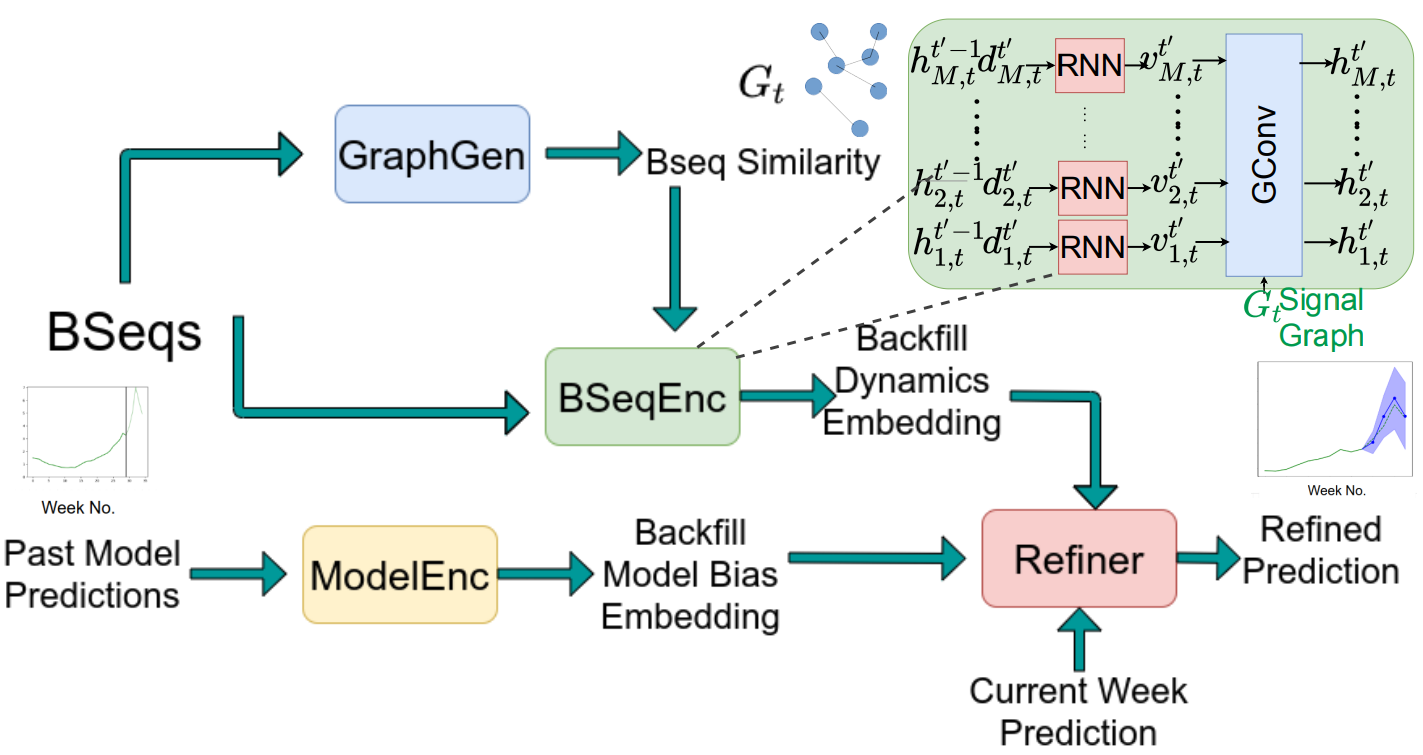 Back2Future: Leveraging Backfill Dynamics for Improving Real-time Predictions in FutureKamarthi, Harshavardhan, Rodrı́guez, Alexander, and Prakash, B AdityaPreprint 2021
Back2Future: Leveraging Backfill Dynamics for Improving Real-time Predictions in FutureKamarthi, Harshavardhan, Rodrı́guez, Alexander, and Prakash, B AdityaPreprint 2021In real-time forecasting in public health, data collection is a non-trivial and demanding task. Often after initially released, it undergoes several revisions later (maybe due to human or technical constraints) - as a result, it may take weeks until the data reaches to a stable value. This so-called ’backfill’ phenomenon and its effect on model performance has been barely studied in the prior literature. In this paper, we introduce the multi-variate backfill problem using COVID-19 as the motivating example. We construct a detailed dataset composed of relevant signals over the past year of the pandemic. We then systematically characterize several patterns in backfill dynamics and leverage our observations for formulating a novel problem and neural framework Back2Future that aims to refines a given model’s predictions in real-time. Our extensive experiments demonstrate that our method refines the performance of top models for COVID-19 forecasting, in contrast to non-trivial baselines, yielding 18% improvement over baselines, enabling us obtain a new SOTA performance. In addition, we show that our model improves model evaluation too; hence policy-makers can better understand the true accuracy of forecasting models in real-time.
@article{kamarthi2021back2future, abbr = {back2future21}, title = {Back2Future: Leveraging Backfill Dynamics for Improving Real-time Predictions in Future}, author = {Kamarthi, Harshavardhan and Rodr{\'\i}guez, Alexander and Prakash, B Aditya}, journal = {Preprint}, year = {2021}, selected = {true}, pdf = {https://arxiv.org/abs/2106.04420}, bibtex_show = {true}, code = {https://github.com/AdityaLab/Back2Future} } -
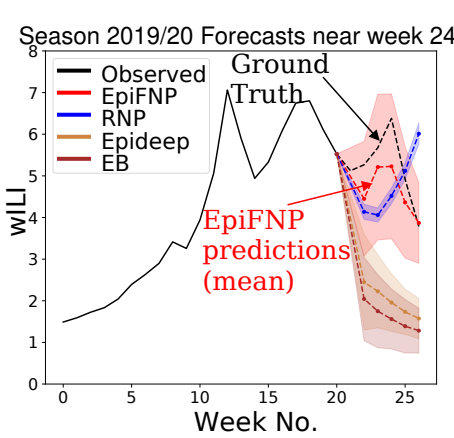 When in Doubt: Neural Non-Parametric Uncertainty Quantification for Epidemic ForecastingThirty-fifth Conference on Neural Information Processing Systems (NeurIPS) 2021
When in Doubt: Neural Non-Parametric Uncertainty Quantification for Epidemic ForecastingThirty-fifth Conference on Neural Information Processing Systems (NeurIPS) 2021Accurate and trustworthy epidemic forecasting is an important problem that has impact on public health planning and disease mitigation. Most existing epidemic forecasting models disregard uncertainty quantification, resulting in mis-calibrated predictions. Recent works in deep neural models for uncertainty-aware time-series forecasting also have several limitations; e.g. it is difficult to specify meaningful priors in Bayesian NNs, while methods like deep ensembling are computationally expensive in practice. In this paper, we fill this important gap. We model the forecasting task as a probabilistic generative process and propose a functional neural process model called EPIFNP, which directly models the probability density of the forecast value. EPIFNP leverages a dynamic stochastic correlation graph to model the correlations between sequences in a non-parametric way, and designs different stochastic latent variables to capture functional uncertainty from different perspectives. Our extensive experiments in a real-time flu forecasting setting show that EPIFNP significantly outperforms previous state-of-the-art models in both accuracy and calibration metrics, up to 2.5x in accuracy and 2.4x in calibration. Additionally, due to properties of its generative process,EPIFNP learns the relations between the current season and similar patterns of historical seasons,enabling interpretable forecasts. Beyond epidemic forecasting, the EPIFNP can be of independent interest for advancing principled uncertainty quantification in deep sequential models for predictive analytics.
@article{kamarthi2021doubt, abbr = {epifnp21}, title = {When in Doubt: Neural Non-Parametric Uncertainty Quantification for Epidemic Forecasting}, author = {Kamarthi, Harshavardhan and Kong, Lingkai and Rodr{\'\i}guez, Alexander and Zhang, Chao and Prakash, B Aditya}, journal = {Thirty-fifth Conference on Neural Information Processing Systems (NeurIPS)}, year = {2021}, selected = {true}, pdf = {https://arxiv.org/abs/2106.03904}, bibtex_show = {true}, code = {https://github.com/AdityaLab/EpiFNP} } -
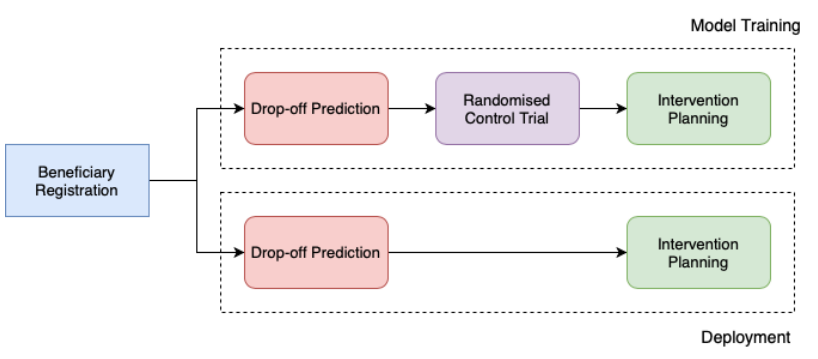 Selective Intervention Planning using Restless Multi-Armed Bandits to Improve Maternal and Child Health OutcomesNishtala, Siddharth, Madaan, Lovish, Mate, Aditya, Kamarthi, Harshavardhan, Grama, Anirudh, Thakkar, Divy, Narayanan, Dhyanesh, Chaudhary, Suresh, Madhiwalla, Neha, Padmanabhan, Ramesh, and others,arXiv preprint arXiv:2103.09052 2021
Selective Intervention Planning using Restless Multi-Armed Bandits to Improve Maternal and Child Health OutcomesNishtala, Siddharth, Madaan, Lovish, Mate, Aditya, Kamarthi, Harshavardhan, Grama, Anirudh, Thakkar, Divy, Narayanan, Dhyanesh, Chaudhary, Suresh, Madhiwalla, Neha, Padmanabhan, Ramesh, and others,arXiv preprint arXiv:2103.09052 2021India has a maternal mortality ratio of 113 and child mortality ratio of 2830 per 100,000 live births. Lack of access to preventive care information is a major contributing factor for these deaths, especially in low resource households. We partner with ARMMAN, a non-profit based in India employing a call-based information program to disseminate health-related information to pregnant women and women with recent child deliveries. We analyze call records of over 300,000 women registered in the program created by ARMMAN and try to identify women who might not engage with these call programs that are proven to result in positive health outcomes. We built machine learning based models to predict the long term engagement pattern from call logs and beneficiaries’ demographic information, and discuss the applicability of this method in the real world through a pilot validation. Through a randomized controlled trial, we show that using our model’s predictions to make interventions boosts engagement metrics by 61.37%. We then formulate the intervention planning problem as restless multi-armed bandits (RMABs), and present preliminary results using this approach.
@article{nishtala2021selective, abbr = {selective20}, title = {Selective Intervention Planning using Restless Multi-Armed Bandits to Improve Maternal and Child Health Outcomes}, author = {Nishtala, Siddharth and Madaan, Lovish and Mate, Aditya and Kamarthi, Harshavardhan and Grama, Anirudh and Thakkar, Divy and Narayanan, Dhyanesh and Chaudhary, Suresh and Madhiwalla, Neha and Padmanabhan, Ramesh and others}, journal = {arXiv preprint arXiv:2103.09052}, year = {2021}, pdf = {https://arxiv.org/abs/2103.09052}, bibtex_show = {true}, selected = {true} }
2020
-
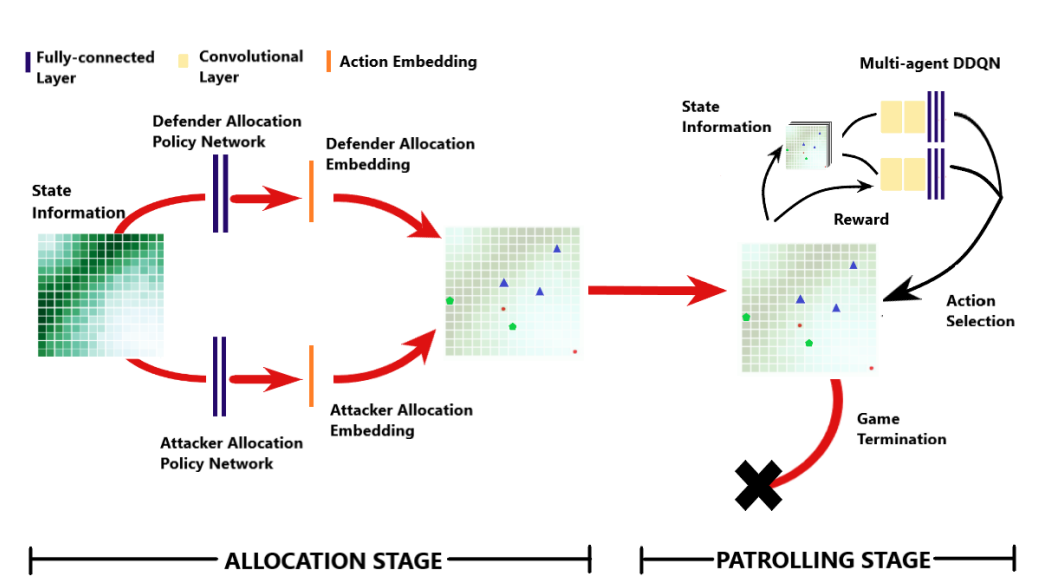 Reinforcement Learning for Unified Allocation and Patrolling in Signaling Games with UncertaintyVenugopal, Aravind, Bondi, Elizabeth, Kamarthi, Harshavardhan, Dholakia, Keval, Ravindran, Balaraman, and Tambe, Milind20th International Conference on Autonomous Agents and Multiagent Systems (AAMAS) 2020
Reinforcement Learning for Unified Allocation and Patrolling in Signaling Games with UncertaintyVenugopal, Aravind, Bondi, Elizabeth, Kamarthi, Harshavardhan, Dholakia, Keval, Ravindran, Balaraman, and Tambe, Milind20th International Conference on Autonomous Agents and Multiagent Systems (AAMAS) 2020Green Security Games (GSGs) have been successfully used in the protection of valuable resources such as fisheries, forests and wildlife. While real-world deployment involves both resource allocation and subsequent coordinated patrolling with communication and real-time, uncertain information, previous game models do not fully address both of these stages simultaneously. Furthermore, adopting existing solution strategies is difficult since they do not scale well for larger, more complex variants of the game models. We therefore first propose a novel GSG model that combines defender allocation, patrolling, real-time drone notification to human patrollers, and drones sending warning signals to attackers. The model further incorporates uncertainty for real-time decision-making within a team of drones and human patrollers. Second, we present CombSGPO, a novel and scalable algorithm based on reinforcement learning, to compute a defender strategy for this game model. CombSGPO performs policy search over a multi-dimensional, discrete action space to compute an allocation strategy that is best suited to a best-response patrolling strategy for the defender, learnt by training a multi-agent Deep Q-Network. We show via experiments that CombSGPO converges to better strategies and is more scalable than comparable approaches. Third, we provide a detailed analysis of the coordination and signaling behavior learnt by CombSGPO, showing group formation between defender resources and patrolling formations based on signaling and notifications between resources. Importantly, we find that strategic signaling emerges in the final learnt strategy. Finally, we perform experiments to evaluate these strategies under different levels of uncertainty.
@article{venugopal2020reinforcement, abbr = {patrol20}, title = {Reinforcement Learning for Unified Allocation and Patrolling in Signaling Games with Uncertainty}, author = {Venugopal, Aravind and Bondi, Elizabeth and Kamarthi, Harshavardhan and Dholakia, Keval and Ravindran, Balaraman and Tambe, Milind}, journal = {20th International Conference on Autonomous Agents and Multiagent Systems (AAMAS)}, year = {2020}, pdf = {https://arxiv.org/abs/2012.10389}, bibtex_show = {true}, selected = {true} } -
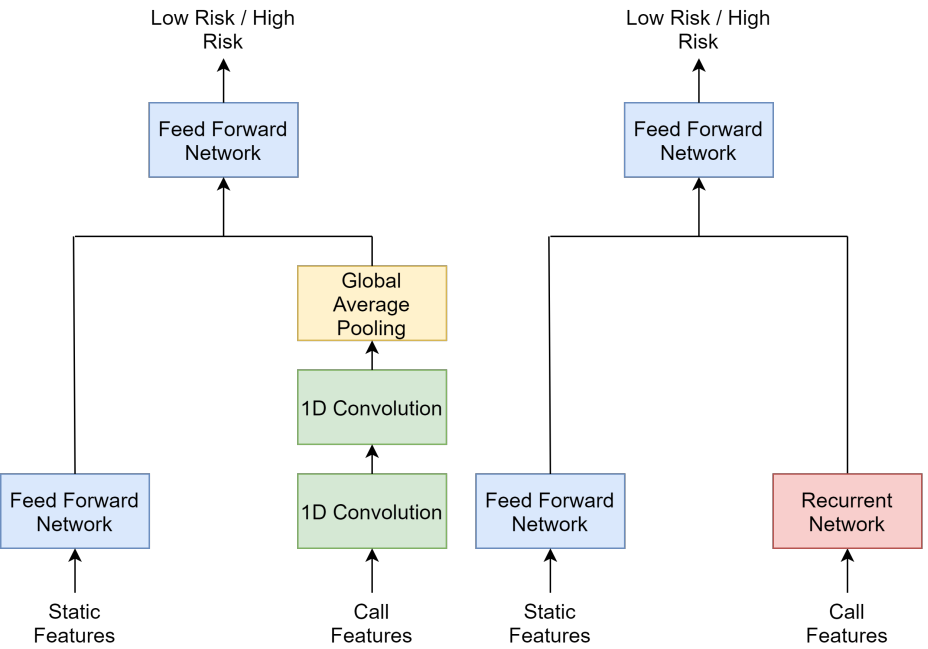 Missed calls, Automated Calls and Health Support: Using AI to improve maternal health outcomes by increasing program engagementNishtala, Siddharth, Kamarthi, Harshavardhan, Thakkar, Divy, Narayanan, Dhyanesh, Grama, Anirudh, Hegde, Aparna, Padmanabhan, Ramesh, Madhiwalla, Neha, Chaudhary, Suresh, Ravindran, Balaraman, and others,Harvard CRCS Workshop on AI for Social Good 2020
Missed calls, Automated Calls and Health Support: Using AI to improve maternal health outcomes by increasing program engagementNishtala, Siddharth, Kamarthi, Harshavardhan, Thakkar, Divy, Narayanan, Dhyanesh, Grama, Anirudh, Hegde, Aparna, Padmanabhan, Ramesh, Madhiwalla, Neha, Chaudhary, Suresh, Ravindran, Balaraman, and others,Harvard CRCS Workshop on AI for Social Good 2020India accounts for 11% of maternal deaths globally where a woman dies in childbirth every fifteen minutes. Lack of access to preventive care information is a significant problem contributing to high maternal morbidity and mortality numbers, especially in low-income households. We work with ARMMAN, a non-profit based in India, to further the use of call-based information programs by early-on identifying women who might not engage on these programs that are proven to affect health parameters positively.We analyzed anonymized call-records of over 300,000 women registered in an awareness program created by ARMMAN that uses cellphone calls to regularly disseminate health related information. We built robust deep learning based models to predict short term and long term dropout risk from call logs and beneficiaries’ demographic information. Our model performs 13% better than competitive baselines for short-term forecasting and 7% better for long term forecasting. We also discuss the applicability of this method in the real world through a pilot validation that uses our method to perform targeted interventions.
@article{nishtala2020missed, abbr = {missedcall20}, title = {Missed calls, Automated Calls and Health Support: Using AI to improve maternal health outcomes by increasing program engagement}, author = {Nishtala, Siddharth and Kamarthi, Harshavardhan and Thakkar, Divy and Narayanan, Dhyanesh and Grama, Anirudh and Hegde, Aparna and Padmanabhan, Ramesh and Madhiwalla, Neha and Chaudhary, Suresh and Ravindran, Balaraman and others}, journal = {Harvard CRCS Workshop on AI for Social Good}, year = {2020}, bibtex_show = {true}, selected = {true}, pdf = {https://arxiv.org/abs/2006.07590} }
2019
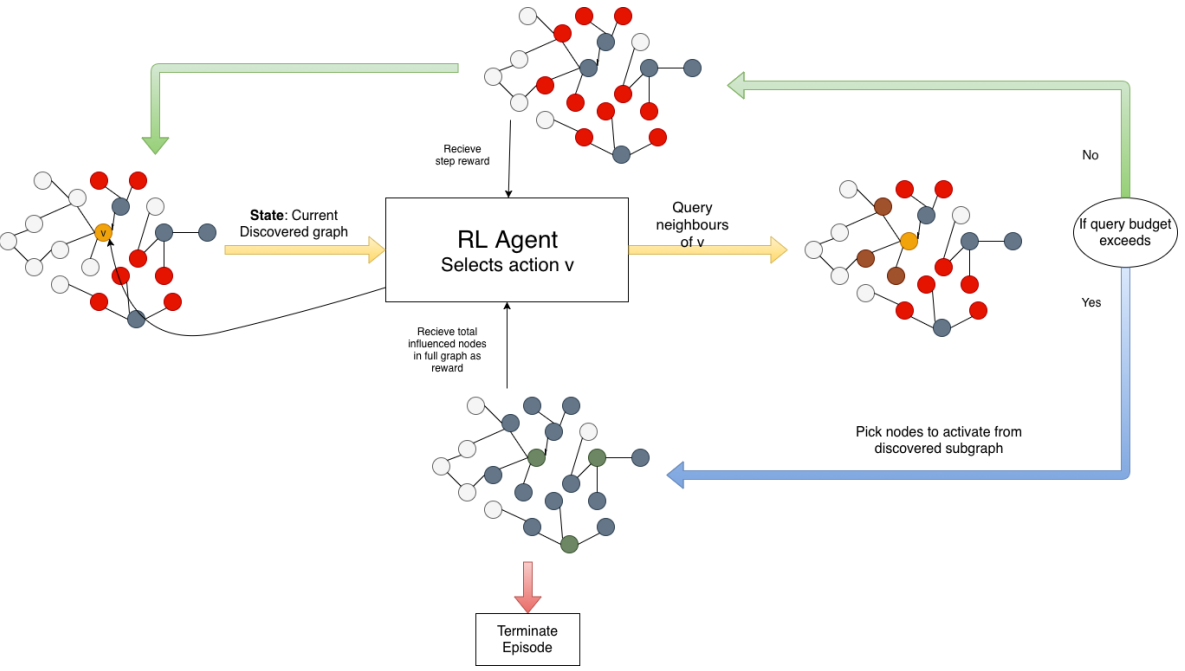 Influence maximization in unknown social networks: Learning Policies for Effective Graph SamplingKamarthi, Harshavardhan, Vijayan, Priyesh, Wilder, Bryan, Ravindran, Balaraman, and Tambe, Milind19th International Conference on Autonomous Agents and Multiagent Systems (AAMAS), Nominated for Best Paper Award<\b> </em> 2019 </div>
Influence maximization in unknown social networks: Learning Policies for Effective Graph SamplingKamarthi, Harshavardhan, Vijayan, Priyesh, Wilder, Bryan, Ravindran, Balaraman, and Tambe, Milind19th International Conference on Autonomous Agents and Multiagent Systems (AAMAS), Nominated for Best Paper Award<\b> </em> 2019 </div>A serious challenge when finding influential actors in real-world social networks is the lack of knowledge about the structure of the underlying network. Current state-of-the-art methods rely on hand-crafted sampling algorithms; these methods sample nodes and their neighbours in a carefully constructed order and choose opinion leaders from this discovered network to maximize influence spread in the (unknown) complete network. In this work, we propose a reinforcement learning framework for network discovery that automatically learns useful node and graph representations that encode important structural properties of the network. At training time, the method identifies portions of the network such that the nodes selected from this sampled subgraph can effectively influence nodes in the complete network. The realization of such transferable network structure based adaptable policies is attributed to the meticulous design of the framework that encodes relevant node and graph signatures driven by an appropriate reward scheme. We experiment with real-world social networks from four different domains and show that the policies learned by our RL agent provide a 10-36% improvement over the current state-of-the-art method.
</div> </div> </li>@article{kamarthi2019influence, abbr = {influence19}, title = {Influence maximization in unknown social networks: Learning Policies for Effective Graph Sampling}, author = {Kamarthi, Harshavardhan and Vijayan, Priyesh and Wilder, Bryan and Ravindran, Balaraman and Tambe, Milind}, journal = {19th International Conference on Autonomous Agents and Multiagent Systems (AAMAS), <b>Nominated for Best Paper Award<\b> }, note = {Nominated for best paper award}, year = {2019}, selected = {true}, pdf = {https://arxiv.org/abs/1907.11625}, bibtex_show = {true}, code = {https://github.com/kage08/graph_sample_rl} }-
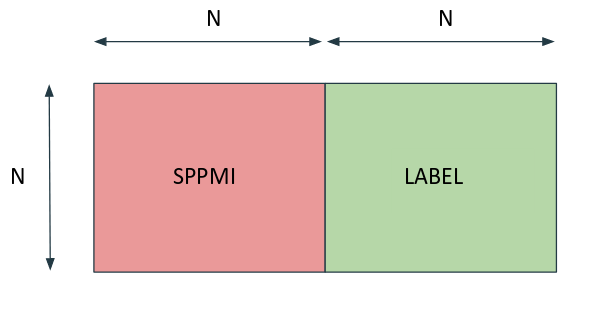 Integrating Lexical Knowledge in Word Embeddings using Sprinkling and RetrofittingSrinivasan, Aakash, Kamarthi, Harshavardhan, Ganesan, Devi, and Chakraborti, SutanuInternational Conference on Natural Language Processing (ICNLP) 2019
Integrating Lexical Knowledge in Word Embeddings using Sprinkling and RetrofittingSrinivasan, Aakash, Kamarthi, Harshavardhan, Ganesan, Devi, and Chakraborti, SutanuInternational Conference on Natural Language Processing (ICNLP) 2019Neural network based word embeddings, such as Word2Vec and GloVe, are purely data driven in that they capture the distributional information about words from the training corpus. Past works have attempted to improve these embeddings by incorporating semantic knowledge from lexical resources like WordNet. Some techniques like retrofitting modify word embeddings in the post-processing stage while some others use a joint learning approach by modifying the objective function of neural networks. In this paper, we discuss two novel approaches for incorporating semantic knowledge into word embeddings. In the first approach, we take advantage of Levy et al’s work which showed that using SVD based methods on co-occurrence matrix provide similar performance to neural network based embeddings. We propose a ’sprinkling’ technique to add semantic relations to the co-occurrence matrix directly before factorization. In the second approach, WordNet similarity scores are used to improve the retrofitting method. We evaluate the proposed methods in both intrinsic and extrinsic tasks and observe significant improvements over the baselines in many of the datasets.
@article{srinivasan2019integrating, abbr = {integrating19}, title = {Integrating Lexical Knowledge in Word Embeddings using Sprinkling and Retrofitting}, author = {Srinivasan, Aakash and Kamarthi, Harshavardhan and Ganesan, Devi and Chakraborti, Sutanu}, journal = {International Conference on Natural Language Processing (ICNLP)}, year = {2019}, bibtex_show = {true}, pdf = {https://arxiv.org/pdf/1912.06889}, selected = {true} }</ol>
</div>